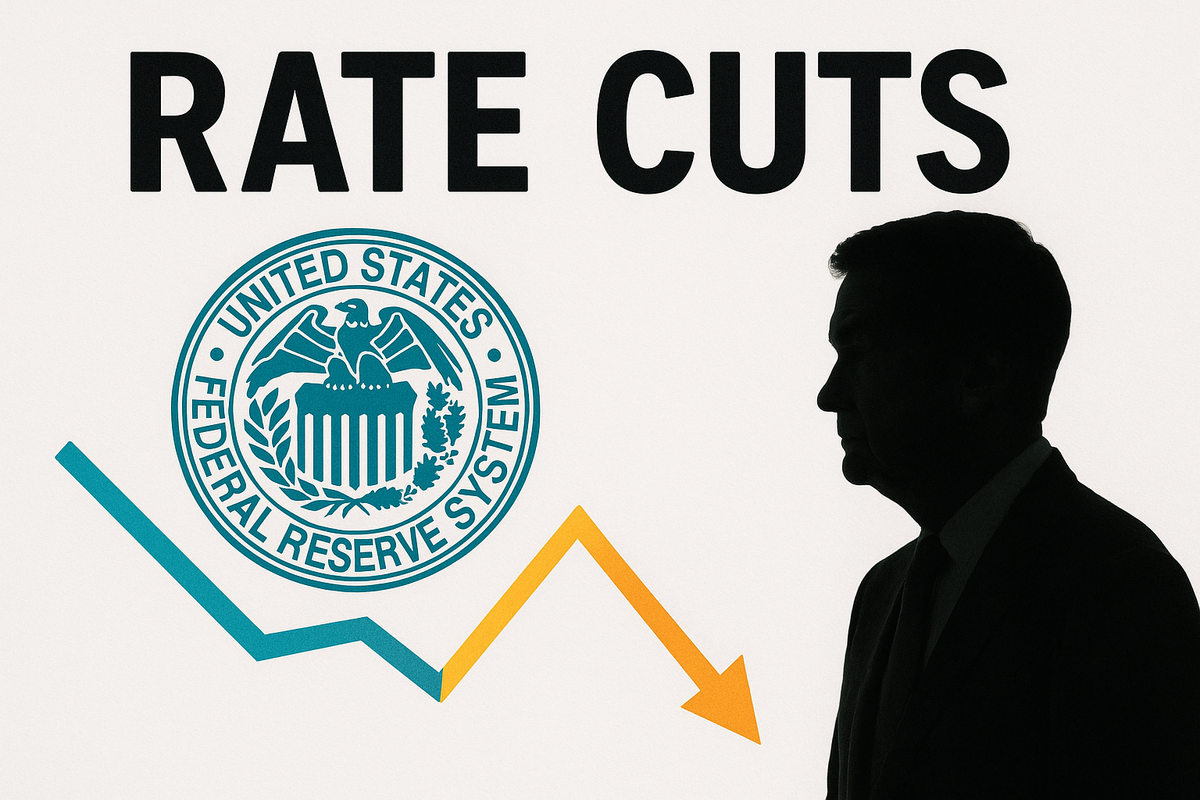As the Federal Reserve prepares for its upcoming meeting on October 29, divergent perspectives among its governors highlight a critical juncture in monetary policy. Recent economic indicators reveal a softening labor market and persistent inflation, prompting discussions around potential rate cuts.

Table of Contents
Key Facts
Recent speeches by Federal Reserve governors Stephen Miran and Christopher Waller underscore differing approaches to interest rate cuts amid a backdrop of economic uncertainty.
Miran advocates for a half-point rate cut, citing concerns over the labor market and geopolitical tensions, while Waller supports a more cautious quarter-point reduction.
Current inflation stands at 2.7% for Personal Consumption Expenditures (PCE), with core inflation at 2.9%, both above the Fed’s 2% target.
The economy has shown contrasting signs, with GDP growth estimated at 1.6% in the first half of the year, but a significant drop in job creation, from an average of 111,000 jobs per month in Q1 to just 22,000 in August.
The ongoing federal government shutdown has further complicated the economic landscape, delaying key data releases and impacting consumer confidence.
Analysis and Interpretation
The contrasting views between Miran and Waller reflect a broader uncertainty regarding the economic outlook. Miran’s push for a more aggressive rate cut suggests a belief that the current economic environment necessitates immediate action to stimulate growth, particularly given the signs of a weakening labor market. In contrast, Waller’s more cautious stance emphasizes the need to balance the risks of inflation against the potential benefits of supporting employment.
This internal debate at the Fed highlights the complexity of monetary policy-making in an environment marked by mixed economic signals. The decline in job creation raises concerns about the sustainability of consumer spending, which is critical for economic growth. Waller’s emphasis on avoiding premature rate cuts points to a recognition that inflationary pressures, exacerbated by tariffs, may not be as transitory as previously thought.
The potential for a 25 basis point rate cut, as suggested by Waller, aligns with the current sentiment among many Fed officials who advocate for a more measured approach. However, Miran’s call for a 50 basis point cut indicates a sense of urgency to address the labor market’s challenges, which may be exacerbated by external factors such as ongoing trade tensions with China.
The upcoming FOMC meeting will be crucial in determining the Fed’s response to these challenges. If the Fed opts for a more aggressive cut, it could signal a shift in policy aimed at addressing immediate economic concerns. Conversely, a cautious approach may reflect a desire to maintain stability and prevent potential inflationary fallout.
Investors are closely monitoring these developments, as the decisions made by the Fed will significantly impact borrowing costs, consumer confidence, and overall economic growth. The interplay between inflation and labor market dynamics will be pivotal in shaping the Fed’s future policy direction.
Market Impact
The differing stances on interest rate cuts are influencing market sentiment across various asset classes. A potential shift towards lower rates could boost equity markets, particularly sectors sensitive to borrowing costs, such as technology and consumer discretionary.
Conversely, if the Fed adopts a more cautious approach, it may lead to increased volatility in the stock market as investors reassess their expectations for growth. The bond market is already reacting, with yields on 10-year Treasuries reflecting the uncertainty surrounding future rate cuts.
In the currency markets, the U.S. dollar remains stable against major currencies, signaling cautious investor sentiment ahead of the FOMC meeting. The potential for rate cuts could weigh on the dollar if markets perceive a shift towards a more accommodative monetary policy.
Commodities, particularly oil, may also experience fluctuations based on Fed decisions, as lower interest rates typically support higher demand expectations. However, ongoing geopolitical tensions could counteract these gains, creating a complex landscape for commodity traders.
Scenarios
Base scenario: The Fed opts for a quarter-point rate cut, maintaining a cautious approach while monitoring labor market developments. This could stabilize markets but may not provide significant stimulus to the economy.
Optimistic scenario: The Fed implements a half-point rate cut, leading to a surge in consumer confidence and spending, which could bolster economic growth and improve job creation in the following months.
Pessimistic scenario: The Fed refrains from cutting rates or opts for a minimal adjustment, resulting in continued labor market weakness and stalling economic growth, potentially leading to increased recessionary risks.
Conclusion
The upcoming Fed meeting is set against a backdrop of economic uncertainty, with divergent views among governors on the pace of interest rate cuts. While the labor market shows signs of strain, inflation remains a pressing concern. The decisions made by the Fed will have significant implications for the economy and financial markets, highlighting the delicate balance policymakers must maintain.
- https://www.federalreserve.gov/newsevents/speech/waller20251016a.htm
- https://www.realestatenews.com/2025/10/16/fed-gov-pushes-for-aggressive-rate-cut-cfpb-to-close-down
- https://www.cnbc.com/2025/10/16/fed-governor-miran-wants-a-half-point-cut-this-month-while-waller-backs-another-quarter-point-move.html
